College Dedicates Semans-Griswold Environmental Hall
Decades in the envisioning, Semans-Griswold Environmental Hall is dedicated on the Chester River.
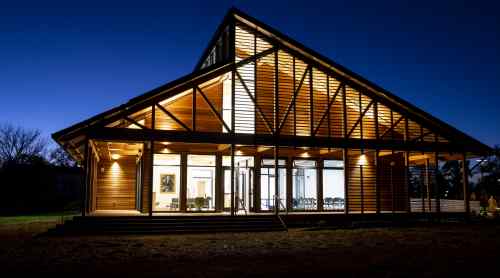
CHESTERTOWN, MD—On a perfect autumn Eastern Shore afternoon, with the Chester River shimmering behind them, a standing-room-only gathering of students, faculty, staff, board members, donors, friends, and dignitaries on Friday dedicated Semans-Griswold Environmental Hall, a new home for Washington College's Center for Environment & Society that has been decades in the making and will help propel the College's environmental and sustainability programs to a national level.
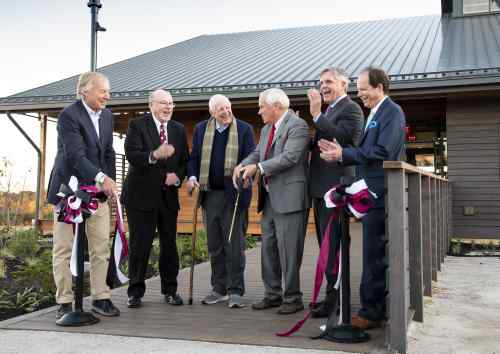
The event culminated in a ribbon-cutting, after College President Kurt Landgraf conferred special honors on the building's namesakes, Truman T. Semans and Jack S. “Jay” Griswold. Semans, who over a lifetime of conservation efforts and action helped found the Chesapeake Bay Foundation and is considered a pioneer in the field of sustainability, was awarded the honorary degree, Doctor of Public Service. Griswold, chairman emeritus of the College's Board of Visitors and Governors and interim president of the College in 2014-15, was awarded the Truman Semans Lifetime Achievement Award in Conservation.
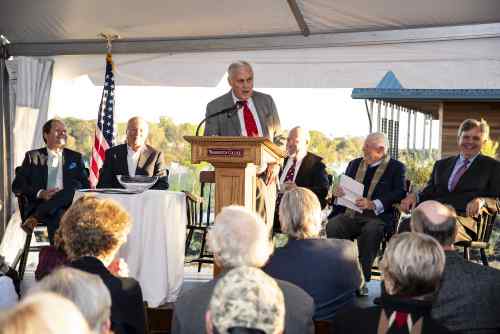
“With great optimism and foresight, College leaders identified the perfect spot for the center's waterfront home, right here—a former brownfields site where a fertilizer plant and a fuel depot once stood,” Landgraf said. “The College's decision to rehabilitate this land and to design a low-impact building that would rely solely on renewable energy sources speaks volumes about the institutional commitment to environmental conservation and the values of responsible citizenship we hope to impart to our students.”
Noting the living laboratories of the Chester River, Chesapeake Bay, and the College's 4,700-acre River and Field Campus nearby, Center for Environment & Society Director John Seidel said that the new building “is going to help us take advantage of place as never before. I do believe this is a game-changer.”
State Comptroller Peter Franchot noted that the state, which provided $4 million for the building, will continue to be a positive partner for the College as it builds its environmental and sustainability programming.
“You're filling a growing need in our sciences with your environmental science programs,” Franchot said. “It's fulfilling crucial research on the Chesapeake Bay. I couldn't be prouder of this facility.”
Former board Chair Larry Culp, who spearheaded the remarkable fundraising for the building—helping raise $11.5 million in just six months—said that the building's efforts to meet the rigorous, holistic standards of the Living Building Challenge (LBC) personify its larger purpose and that of the people who helped make it happen.
“The LBC requires the building to give back more than it takes,” Culp said. “This is what Truman Semans and Jay Griswold, in their humility and achievements, exemplify…We thank everyone who helped make our waterfront renaissance a reality.”
LBC focuses on building self-sufficient and regenerative buildings that connect occupants to nature while creating positive impacts on human and natural systems that interact with the structure. The new building is built to achieve certification on various LBC standards, chief among them in its net-positive energy use. It will rely solely on renewable energy sources and operate year-round in a pollution-free manner, producing at least 105 percent of its energy intake through a rooftop photovoltaic array of over 300 solar panels. Over a year, the building will push more energy into the grid than it removes.
Among its innovative design features is a state-of-the-art marine science lab that includes a river flow-through system, bringing ambient water from the Chester River to support a teaching and research lab. This will give faculty and students the unique ability to study river ecology and marine organism biology in a controlled environment. A Watershed Innovations Lab will serve as the home of Chester River Watershed Observatory. Here, students will be able to monitor water quality, deploy side-scan sonar to explore the river floor, construct autonomous underwater vehicles, and develop innovative processes that incorporate the latest technology in watershed science.
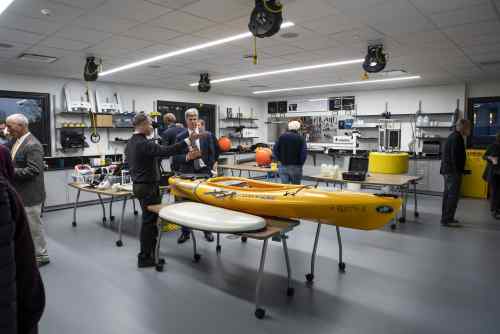
Along with serving as the new home of the Center for Environment & Society, the 11,500-square-foot Semans-Griswold Environmental Hall will provide academic and lab spaces for the College's growing biology and environmental programs. It will support hands-on research on the Chesapeake and become a magnet for leadership centered on the environment and the challenges facing the region, the country, and the world.
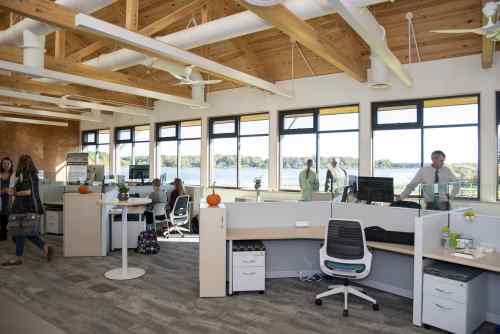
It complements and enhances the College's diverse assets and powerful programming in the environment, including the interdisciplinary academic majors in environmental science and environmental studies and the biology major, the Chester River Field Research Station and its far-reaching projects and research, the River and Field Campus, the research vessels Callinectes and Lookdown, the Chesapeake Semester, and the new Eastern Shore Food Lab at Washington College.